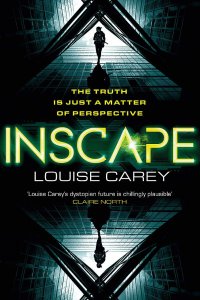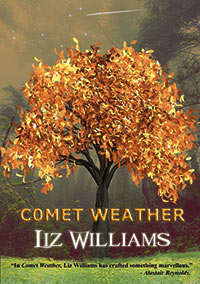Alvaro Zinos-Amaro Reviews Phasers on Stun!: How the Making (and Remaking) of Star Trek Changed the World by Ryan Britt
 Phasers on Stun!: How the Making (and Remaking) of Star Trek Changed the World, Ryan Britt (Plume 978-0593185698, $28.00, 400pp, hc) May 2022.
Phasers on Stun!: How the Making (and Remaking) of Star Trek Changed the World, Ryan Britt (Plume 978-0593185698, $28.00, 400pp, hc) May 2022.
Star Trek’s original series lasted 79 episodes. Amazingly, there are now more non-fiction books about said franchise than there are individual episodes of the classic show. Many of the well over one hundred Trek non-fiction books focus either on individual shows and movies or specific themes and subjects, but a handful use their viewscreens panoramically and attempt to give a full sense of Trek’s half-century. One such is Ryan Britt’s Phasers on Stun!, probably closest in scope, and even title, to Marcus Berkmann’s Set Phasers to Stun: 50 Years of Star Trek (2016). Britt doesn’t break a lot of new ground with this book, but offers enough distinctive characteristics to avoid becoming a mere transporter duplicate, and will likely prove engaging to modern readers or newbies.
Throughout the book’s seventeen chronologically arranged chapters Britt mines over one hundred original interviews to back up his observations. This original primary source material – ranging from comments by William Shatner to recent YouTube reviewers – is the book’s biggest contribution to Trek non-fiction. The end-notes to each chapter reveal that Britt has dug deep into the dilithium mines of franchise lore and history. Britt’s synthesis of countless episodes and movies, not to mention ancillary reference tomes, media tie-in novels, and comics, is impressive, and speaks to his zeal and commitment.
A prolific writer of punchy online articles, Britt approaches his overview in a similarly chatty, profanity-laden way, with hyperbole the default setting. For example: “This hints at the key element to Star Trek fandom that everyone forgets: We know Trek is a little silly, but if you ask us about it, we’ll tell you it’s the most fucking intellectually important thing of all time.” Britt’s many judgments are unleashed like Ferengi energy whips. “Picard yelling at people,” he writes, “constitutes 99 percent of all of Patrick Stewart’s best performances.” Or: “[Sean] Connery playing Sybok would have saved The Final Frontier.” Yeah, well, you know, that’s just like, your opinion, man.
The book’s early chapters deal with Star Trek’s inception, production challenges, and initial reception, often via catchy introductory hooks, like the quality of Spock’s prosthetic ears. Writers like Isaac Asimov and Theodore Sturgeon are introduced thusly: “A divisive figure in literary science fiction history, with a troublesome reputation for arrogance and misogyny, Asimov” and “Theodore Sturgeon, an eccentric science fiction writer who was the real-life basis for Kurt Vonnegut’s infamous fictional sci-fi writer Kilgore Trout.” Britt gives us a good sense of the complexities of Gene Roddenberry’s character, and spends welcome time on the contributions of other key players like Gene L. Coon. When discussing the original feature films, Britt uses the journey of the character Saavik as a connective line that reveals the movies’ predilection for nostalgia, and in a later chapter he likewise zooms in on Picard’s Earl Gray contrasted with Janeway’s coffee as a “microcosm” to reveal the differences between The Next Generation and Voyager. Chapter nine makes commendable use of a deleted episode scene to comment on therapy. When discussing LGBTQ+ representation, Britt’s deep knowledge of his subject matter shines through in his references to the 1996 Marvel comics series Star Trek: Starfleet Academy. In Chapter 16, Britt makes the important observation that “in Star Trek, adolescent tales of heroic quests are mostly backstory. And that’s because working adults – complete with regrets and family angst – tend to dominate the narrative.” Yes, though I think this understates the importance of these adults’ highly developed competencies. Chapter 17, which wrestles with the question of what Star Trek really is, contains this thought-provoking idea: “in some ways this cycle of backlash and acceptance not only defines the history of Star Trek, but also presents the real reason why it endures as such a hopeful, and nearly secular, religion.” The volume concludes with a handy franchise summary.
One of Phasers on Stun!’s draws is that it covers post-2009 Trek within a broader continuity of analysis and appreciation. “If Deep Space Nine was ‘hope through darkness,”’ Britt comments, “then Discovery Season 1 was hope as an abstract concept while also inside a pitch-black room in which the lightbulbs have been broken.” Regarding two other series, he says, “Picard and Lower Decks might seem like totally different Trekkie beasts, designed for completely disparate audiences, but they’re both forms of contemporary, fully sanctioned fan fiction, primarily spun out of The Next Generation.” Britt opines that these shows “provide the same warm-blanket-on-a-cold-night feeling people think about when they remember the best of Star Trek.” But as he himself is quick to point out about Picard: “From Seven of Nine shooting up seedy bars with her phaser rifle, to Picard’s new Number One, Raffi (Michelle Hurd), battling drug addiction, to Starfleet admiral Clancy (Ann Magnuson) dropping the f-bomb, Picard Season 1 drew plenty of criticism from longtime TNG fans who felt betrayed by the darkness of the new show.” Dude, where’s my blanket?
Britt’s poppy writing style makes for breezy reading, but his penchant for simplification is sometimes misleading. Consider: “Even in 2016, George Takei was filmed watching a trailer for Star Trek Beyond, reacting with disgust to spaceship explosions, and saying, ‘This is not the peaceful vision of the future Gene Roddenberry created.’ Now, Takei is a wonderful and smart person, but even he still leans into the false narrative that all good Star Trek comes from Gene Rodenberry’s vision.” I invite curious readers to seek out that reaction video online. Takei remains impassive while watching the trailer and then offers a quick but thoughtful reaction. He does reference Rodenberry’s name, but he doesn’t actually use the word “peaceful.” Britt is paraphrasing and slightly distorting what Takei actually says (“I didn’t in the preview note anything of the substance of what made Gene Roddenberry’s Star Trek so engaging, and it was the commentary on social justice, political reality at the time,” among other things), yet citing Takei in quotation marks. This is a small example of Britt’s buttressing a belief by sacrificing nuance and accuracy. Ironically, Britt’s own assessment of the earlier 2009 feature film largely mirrors Takei’s critique of Beyond: “Trek 2009 succeeds at being ‘for everyone’ because it’s not actually about anything Star Trek is really known for. It’s only a character piece, and mostly just about Kirk and Spock.” Later, Britt offers this generalization: “True fans of Star Trek know that to love Star Trek is to love something that is deeply flawed.” It seems circularly self-defeating to use the phrase “true fans” in the context of discussing series reception. At one point, Britt suggests that fans may be “inherently conservative,” but a few pages later he celebrates that fans are “primed to embrace change.” In Chapter Nine, Britt notes: “At the height of Trek’s ’90s renaissance, Pocket Books was publishing six different original novels a year.” In fact, from 1995 through the early 2000s, Pocket Books published over 20 original novels a year. I noticed a few other minor gaffes, like the title of the DS9 episode “Rejoined” being accidentally substituted for “Attached” (a TNG episode) in Chapter 15, but hopefully these exist only in the uncorrected pre-publication proof.
Towards the start and the end of the book, Britt twice quotes Picard’s reflection on humanity (though both times Britt attributes it to the pilot, “Encounter at Farpoint”, the line actually derives from the time-traveling series finale, “All Good Things”): “We are what we are, and we’re doing the best we can.” I like Britt’s notion that “after 800 hours of episodes and movies,” fans believe that “maybe this time they’ll get it right. Maybe this time it will be perfect.” That’s emblematically hopeful. Anyone picking up the latest history of Star Trek may understandably feel the same way.
This review and more like it in the July 2022 issue of Locus.
 While you are here, please take a moment to support Locus with a one-time or recurring donation. We rely on reader donations to keep the magazine and site going, and would like to keep the site paywall free, but WE NEED YOUR FINANCIAL SUPPORT to continue quality coverage of the science fiction and fantasy field.
While you are here, please take a moment to support Locus with a one-time or recurring donation. We rely on reader donations to keep the magazine and site going, and would like to keep the site paywall free, but WE NEED YOUR FINANCIAL SUPPORT to continue quality coverage of the science fiction and fantasy field.
©Locus Magazine. Copyrighted material may not be republished without permission of LSFF.






